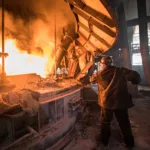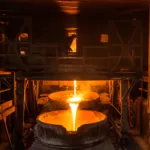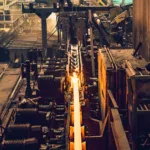A Practical Guide to Identifying Loss Points in Industrial Production
In modern manufacturing, efficiency is not just about how much energy or material is used per ton of production—it’s also about identifying “hidden losses” that silently erode profit margins and productivity.
While unplanned downtime, equipment failures, or poor process control are often easy to observe, hidden losses frequently go undetected—yet they contribute significantly to operational inefficiency and rising costs.
In this article, we explore the most common types of hidden losses in industrial plants, how to detect them, and what strategies can be used to eliminate them.
What Are Hidden Losses?
Hidden losses are performance gaps that are not directly visible, difficult to measure, and typically stem from non-standard process behavior, time inefficiencies, energy waste, or suboptimal material usage.
These losses may appear “normal” within daily operations, but closer analysis often reveals excessive energy consumption, higher cost-per-ton, or elevated failure rates that could be significantly reduced.
Common Types of Hidden Losses
1. Energy-Based Losses
-
Heat loss through refractory linings
-
Low power factor leading to reactive power consumption
-
Prolonged melting due to cold scrap charging
-
Motors, fans, and pumps running unnecessarily on standby
2. Time Losses
-
Excessive ladle return time post-casting
-
Overlong setup and prep times
-
Delays during operator handovers
-
Scattered manual tasks (cleaning, calibrating, logging)
3. Material Losses
-
High metal content in slag
-
Overuse of alloying agents (e.g., excess carbon or manganese)
-
Poor-quality scrap selection
-
Scrap, dross, or trimming losses above acceptable thresholds
4. Equipment Performance Losses
-
Slow thermal response from furnace controls
-
Frequent electrode breakage or overuse
-
Pressure instability in hydraulic systems
-
Delay or lag in transfer car or casting equipment
5. Workforce & Organizational Losses
-
Undefined roles and responsibilities
-
Lack of technical knowledge sharing
-
Poor coordination during restart after downtime
How to Identify Hidden Losses
● Data Acquisition Systems
(MES, SCADA, IoT Platforms)
-
Furnace temperature logs
-
Hourly breakdowns of energy use
-
Real-time cycle time monitoring
-
Material movement tracking
● Process Mapping & Direct Observation
-
Visual observation of downtime and transitions
-
Time studies on critical tasks (charging, pouring, etc.)
-
Cross-functional communication flow reviews
● KPI & Loss Code Frameworks
-
Assigning specific codes to each downtime or quality deviation
-
Structured performance tracking and logging
-
Monthly reports to analyze and benchmark trends
How to Eliminate Hidden Losses
-
Regular refractory audits and thermal performance reviews
-
Using thermal imaging to detect furnace heat leaks
-
Power factor correction via energy analyzers
-
Digitizing Standard Operating Procedures (SOPs)
-
Operator training to boost awareness and process discipline
-
Scheduled and documented preventive maintenance
Alpha Refractory LLC’s Loss Analysis Strategy
At Alpha Refractory LLC, we help facilities uncover and eliminate hidden losses through:
-
In-field diagnostics and hidden loss assessments
-
Refractory-related energy leakage detection
-
Optimization of the charging process
-
ERP–MES integration consulting
-
Technical training and structured performance reporting




